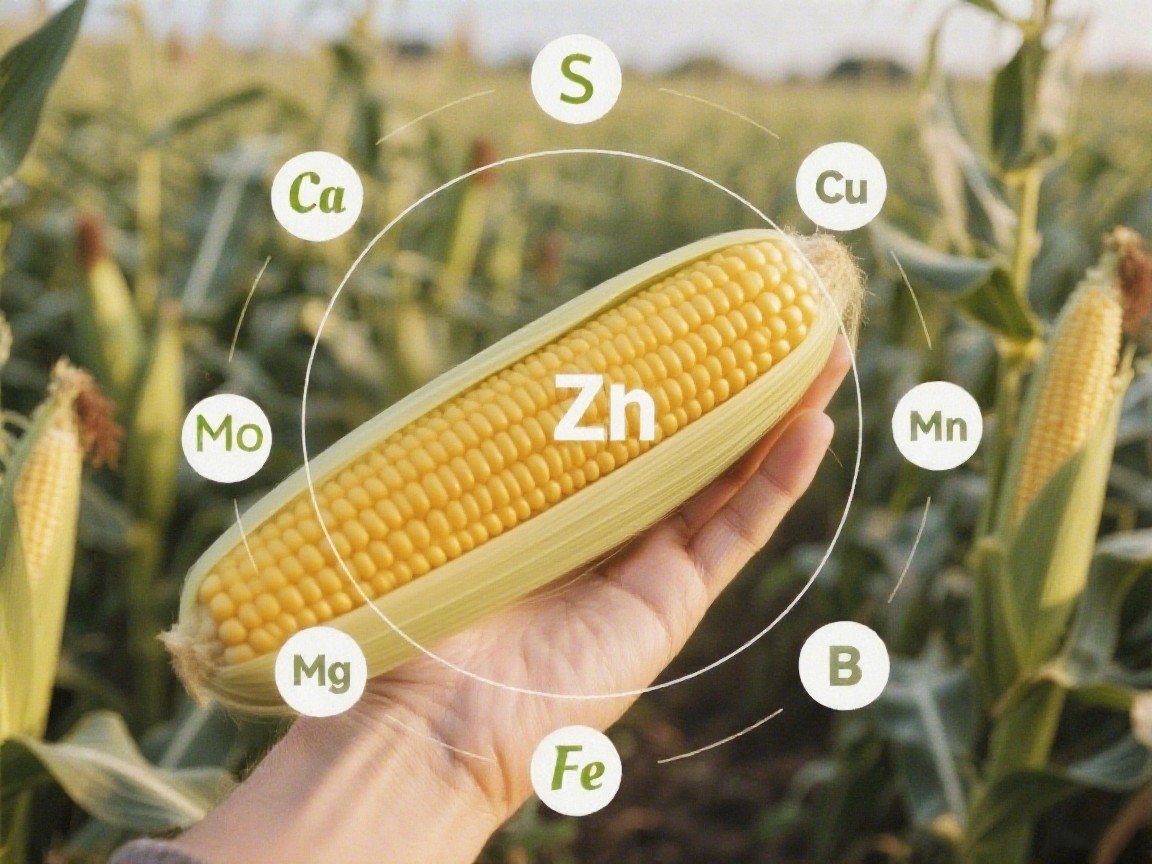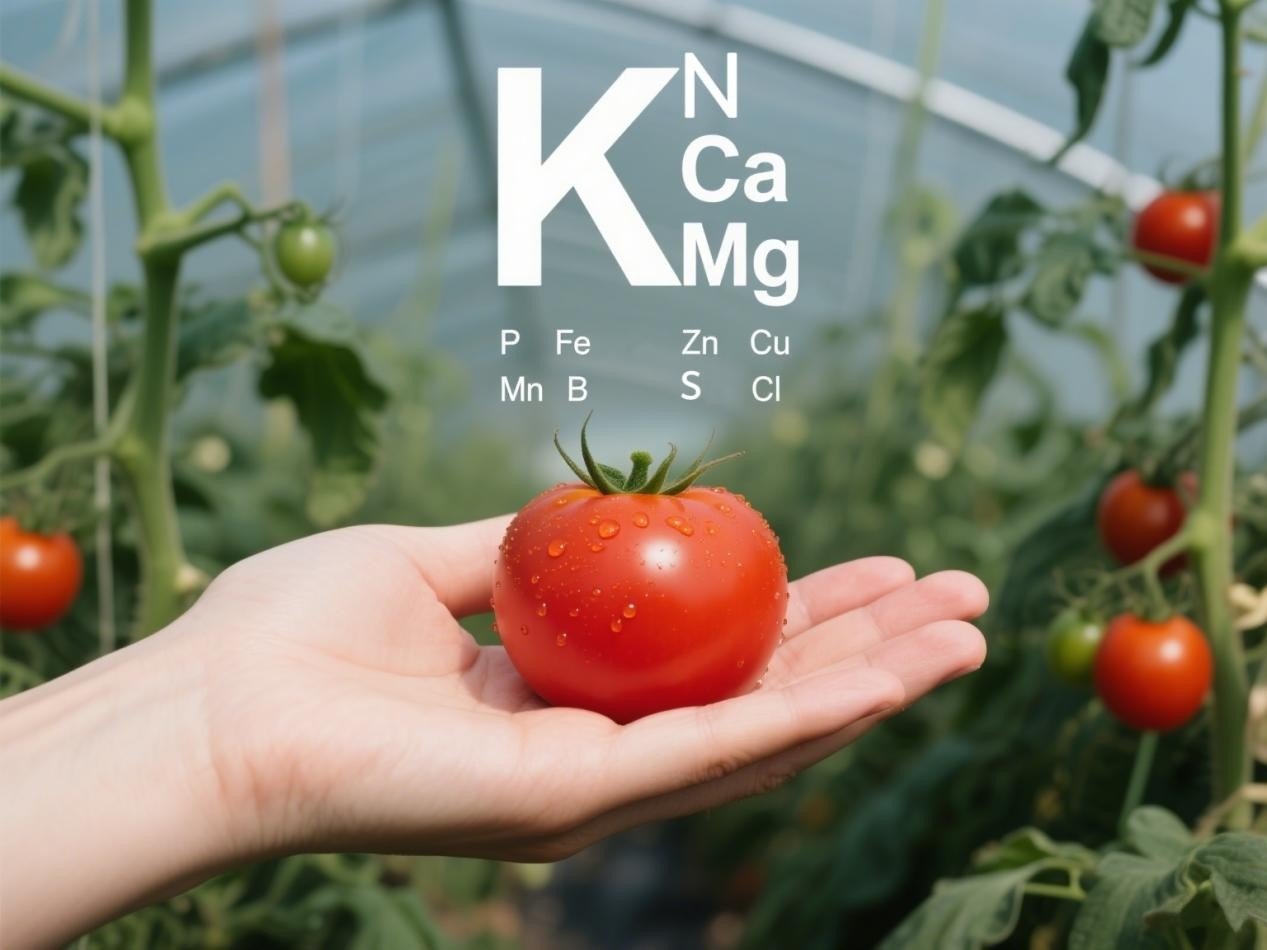Today, as agricultural production pursues high yield, high quality, high efficiency and sustainable development, the connotation of scientific fertilization is far more than the traditional "three major items" of nitrogen, phosphorus and potassium. Medium and trace elements are also indispensable nutrients in the growth process of crops. They participate in a variety of physiological metabolic processes in plants and have a significant impact on the yield, quality and stress resistance of crops.

What role do medium and trace elements play in crops? What are the symptoms of deficiency?
Calcium - the "skeleton" of cells
Function: Strengthen cell wall structure, improve disease resistance, reduce cracked and rotten fruits; promote root development and enhance stress resistance.
Symptoms of calcium deficiency: Calcium deficiency directly leads to high incidence of physiological diseases such as fruit cracking, bitter pit disease (such as apples), and navel rot (such as tomatoes and peppers).
Magnesium - the "heart" of photosynthesis
Function: The core component of chlorophyll, participating in photosynthesis; promoting the synthesis of carbohydrates and proteins, and increasing sweetness.
Symptoms of magnesium deficiency: yellowing between old leaf veins (such as "fishbone-shaped" yellow leaves), a sharp drop in photosynthetic efficiency, and a reduction in yield is inevitable.
Boron - the "key" to flowering and fruiting
Function: Promote pollen tube germination to prevent "flowers without fruits"; improve sugar transportation and increase fruit setting rate.
Symptoms of boron deficiency: necrosis of growing points and deformed fruits (such as "brown heart disease" of radish, "flowers without fruits" of rapeseed, and "buds without flowers" of cotton).
Zinc - the "regulator" of growth hormone
Function: Regulate auxin synthesis, participate in the activity of multiple enzymes, and avoid "small leaf disease".
Symptoms of zinc deficiency: narrow leaves, shortened internodes (such as "white seedling disease" of corn), and slow growth and development.
Iron - the "core" of chlorophyll synthesis
Function: an essential element for chlorophyll synthesis, affecting photosynthesis. Participate in respiration and energy metabolism.
Symptoms of iron deficiency: loss of green between new leaf veins (such as "yellow leaf disease" of citrus).
What are the reasons for the increasingly serious problem of medium and trace elements?
High-intensity output consumption has led to a surge in the total amount of nutrients taken away from the soil by crops, and the amount of trace elements has been insufficient.
The popularity of high-purity fertilizers and long-term single application have exacerbated the imbalance of soil nutrients.
Due to the limitations of the soil itself, acidic soils in the south are prone to lack of calcium, magnesium, boron, and molybdenum; calcareous soils in the north are prone to lack of iron, manganese, and zinc; sandy soils have weak fertility retention and serious leaching.
Future trends: from "yield orientation" to "quality revolution"
As Nobel Prize winner in Chemistry Richard Ernst said: "Trace elements are the golden key to unlocking the mysteries of plant life." Driven by the dual drive of fertilizer reduction and quality improvement, accurate supplementation of trace elements has become an inevitable choice for high-quality agricultural development. As an industry leader, Qingdao Keyuan will continue to innovate and develop, and help farmers achieve the triple breakthrough of "increasing production, improving quality, and increasing efficiency" through intelligent fertilizer solutions, and jointly write a new chapter in the green development of modern agriculture.





